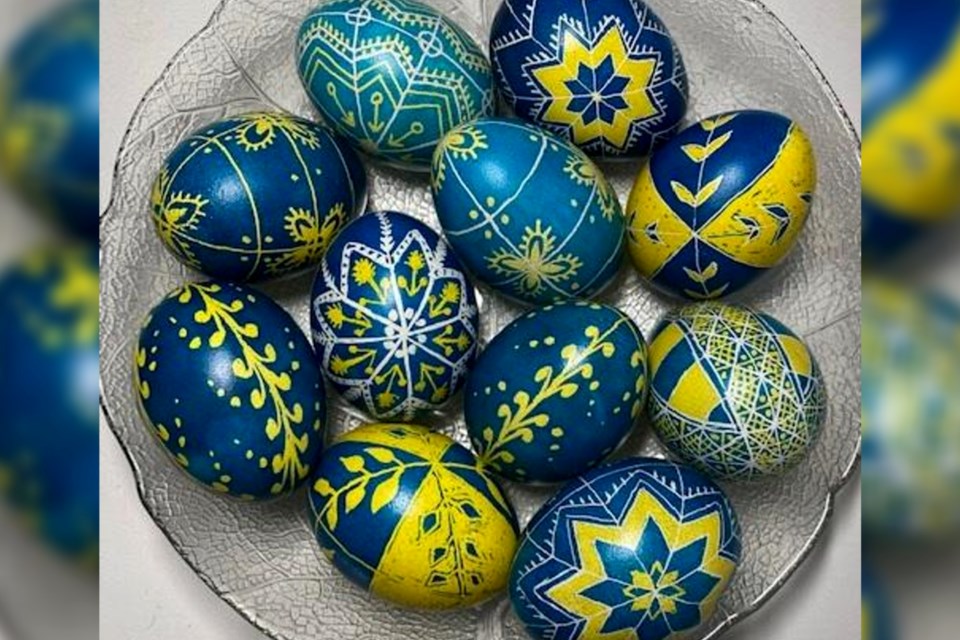Pysanky (from the Ukrainian verb ‘pysaty’, meaning ‘to write’) date back thousands of years. For those who lived on the land now known as Ukraine, eggs were a source of life.
People wrote pysanky each spring to mark the rebirth of the earth. There are many legends associated with pysanky. One of the best known originated among the Ukrainians who live in the Carpathian Mountains in Western Ukraine.
The fate of the world, they say, depends on pysanky. There is a monstrous serpent shackled on a cliff. Each year, the serpent sends out his henchmen to survey the land. The more pysanky that are being written, the more secure the shackles. If there are few pysanky, the shackles are loosened, and the serpent comes closer to freeing himself to wreak havoc on the world.
So long as the tradition lives, good will triumph over evil.
With the introduction of Christianity in Ukraine in the 10th century, pysanky acquired a new meaning. They became symbols of the belief in Jesus Christ’s defeat over death and the rebirth of humanity.
Ukrainians offered them at Easter as gifts to family and friends. They placed them in the soil to secure a good harvest. They put them in their barns to protect their livestock and in beehives to sweeten the season’s honey. They used pysanky to decorate the food baskets they brought to their churches to be blessed, in anticipation of their joyous Easter morning meal.
The art of pysanky writing was almost lost during the Soviet era, when Stalin banned pysanky as part of his campaign to destroy religion in Ukraine and “Russify” its distinct culture. It was primarily the Ukrainian diaspora that scattered Ukrainians and pysanky throughout the world, including Canada, keeping the tradition alive through those years.
As the current brutal war in Ukraine rages on, and Russia once again seeks to destroy Ukrainian culture, pysanky writers throughout the diaspora are mobilizing in force, writing eggs in solidarity with the people of Ukraine and passing the art on to new generations so that it never dies.
The quiet, concentrated action of writing eggs is bringing solace to many a heart shattered by the carnage we are witnessing and feel powerless to stop.
Much like the layers of wax they apply to produce their beautiful creations, today’s pysanky writers are adding yet another layer of meaning to the eggs they write. Pysanky have now also become a symbol of hope for peace in Ukraine.
Many of us have chosen to write our pysanky this year in blue and yellow, the colours of the Ukrainian flag, to honour the magnificent heroism of the people of Ukraine. Our hope is that, with God’s help, peace will come, and we will be able to return to the more traditional colours next Easter.0
Many of us have also vowed, once peace comes, to bring some of our pysanky to Ukraine, along with hammer and nails. We will till our pysanky shells into the fields in which grain will once again grow and into the soil on which homes, hospitals, schools and churches will be rebuilt.
Just as they did for our ancestors, our pysanky will mark rebirth – the rebirth of Ukraine.
Христос воскрес! "Christ is Risen!" Response: Воістину Воскрес! “Indeed, He is Risen!” (Traditional Ukrainian Easter greeting)
Dorothy Pawluch is a Sudbury native of Ukrainian/Italian descent who recently retired from McMaster University where she was a professor of sociology and social psychology.
